How to Use Hazard Reporting Forms

It is hard to underestimate the value that high-quality hazard reporting forms provide your aviation SMS.
Hazard reporting quite literally provides the underpinning for your risk management activities. No hazard reports...nothing for you to manage.
Hazard reporting forms provide incentives, organization, and guidance for employees when they detect irregularities in the operational environment. Having specific questions for specific types of issues makes reporting easier and faster than having vague or general questions.
Building a hazard reporting culture is the first step in building an overall safety reporting culture. Any advantage you gain to this effect will significantly help your safety program, especially considering that “safety culture” is almost completely interchangeable with “safety performance.”
The hazard reporting forms below should be considered essential. A safety program will not need all of these forms, as some will not be relevant. Undoubtedly, many of these forms will help your program and will apply to one or more areas of your operations. Furthermore, having multiple report types will allow you to classify your safety concerns based on their type.
1 – Air Traffic Control Report

Having air traffic control reports available will capture information relevant to air traffic control issues, such as near misses or runway incursions. These hazard reports will capture information like:
- ATC Control Position;
- Airspace;
- Weather;
- Light;
- Altitude;
- Miss Distance horizontal/vertical; and
- TCAS factor.
2 – Fatigue Report
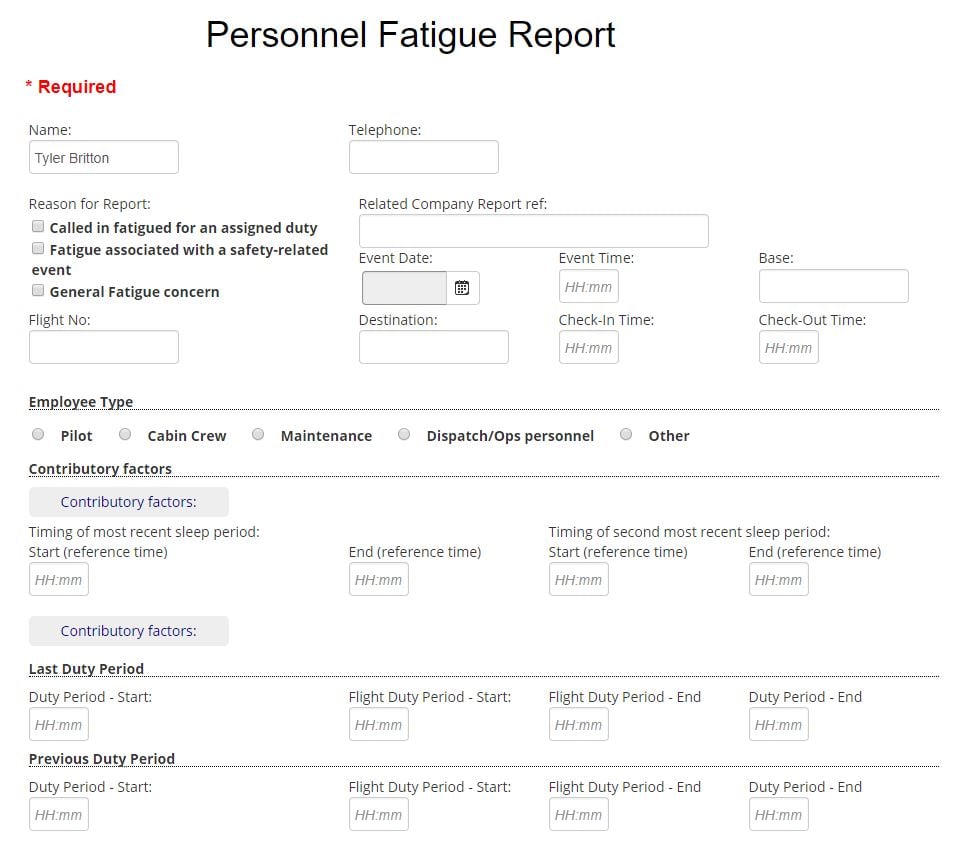
Fatigue reports are critical for pilots in particular but are no less relevant to any other sector of aviation safety. Tired employees pose a risk to your SMS, no matter their role. Fatigue reports should capture much information about the type, condition, and severity of the fatigue, like:
- Contributory factors;
- Last duty period;
- Physical symptoms;
- Cognitive symptoms;
- Description of how fatigued person felt; and
- Date and time of fatigue.
Gathering this data allows you to data mine for trends in fatigue and developing a fatigue risk management plan.
3 – Airport Safety Report
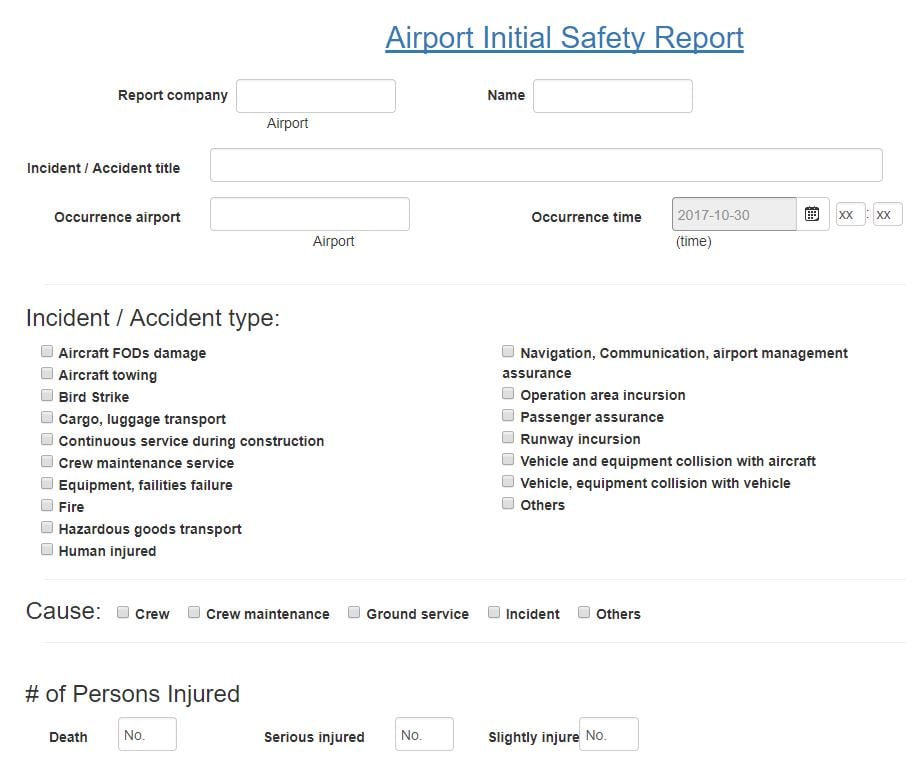
Airport safety forms are hazard reporting forms that are specific to airports. However, they are also applicable to smaller operators who may have a private runway, client facilities, or comprise a significant portion of the local operating environment. In all cases, such operators will face “airport-like” issues.
Such reports capture general information that is relevant to facility operational issues.
4 – Bird Strike Report
This one should come as no surprise. Airlines and operators who have direct control over aircraft will definitely need a dedicated bird strike report. Having significant and detailed data on bird strikes with which to data mine can be instrumental in preventing future strikes.
Airports and other service providers will also want access to this data to see how exposed they are to birds.
5 – Cabin Safety Report
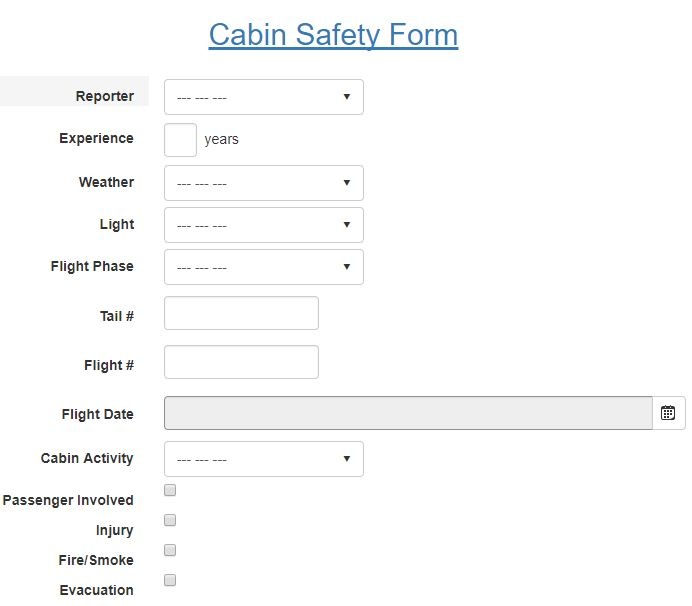
Cabin safety reports are another critical type of report to have for aircraft. Cabin reports give the cabin crew the ability to report issues that are specific to their operations. This offers nice segmentation between similar, but different reports like “Captains Trip” and “Flight Safety.”
Cabin Safety reports include information like:
- Cabin activity;
- Lighting;
- Weather;
- Flight phase; and
- The experience of the cabin crew involved.
6 – Flight Safety Report
Flight Safety reports are general reporting forms in regards to flight safety but are often used specifically to report:
- Near-misses;
- Evasive action taken;
- Airspace; and
- Other basic environmental information.
These reports allow anyone related to the flight to report concerns about the flight that are not necessarily directly related to their duties.
Related Articles on Safety Reporting Culture in Aviation
- 5 Simple Tips to Improve Aviation Safety Reporting Cultures
- Indicators of Good Hazard Reporting Culture
- How to Get Employees Participating in Safety Reporting - Aviation SMS
7 – Captain’s Trip Report
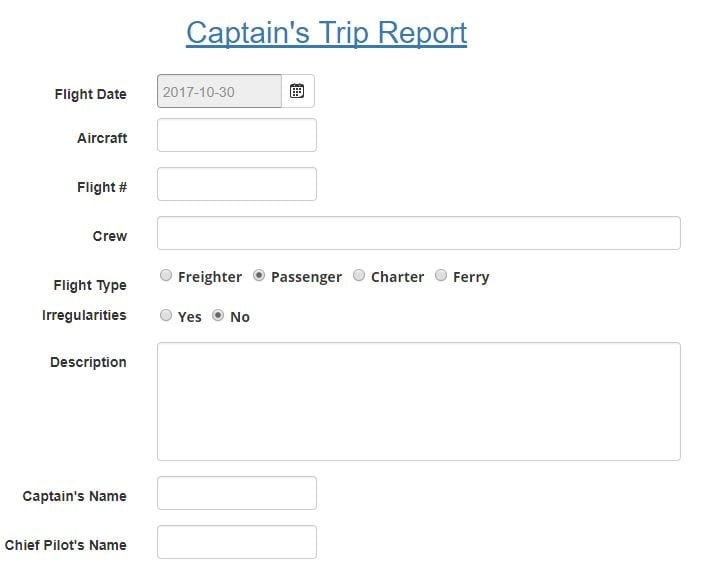
Captain Trip reports allowing pilots to report aircraft control-specific concerns and irregularities. These concerns include things like:
- Equipment or controls that aren’t performing optimally;
- Strange aircraft noises;
- Novel events that occurred during the flight and may have an impact on safety; and
- Any other occurrences or interactions that may affect the ability of pilots to conduct flight operations.
8 – Maintenance Report
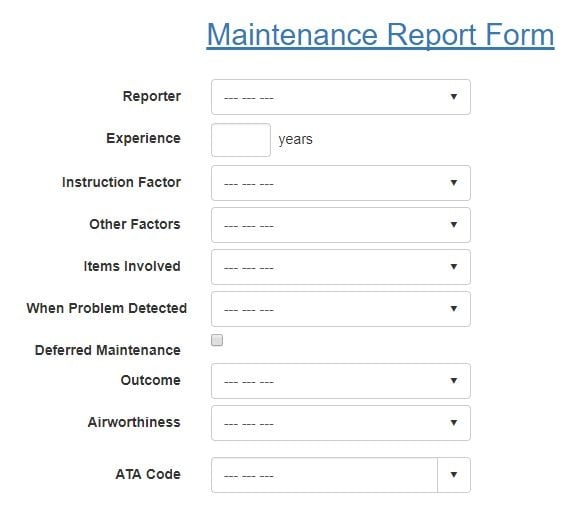
As nearly all aviation service providers will interact with aircraft or machinery on some level, Maintenance Reports are indispensable reports for most operations. It allows you to gather-maintenance specific information like:
- When the problem was detected;
- Items involved in the problem (i.e., what mechanisms are relevant to the problem);
- ATA codes;
- Airworthiness; and
- Other maintenance factors.
9 – Security Officer Report
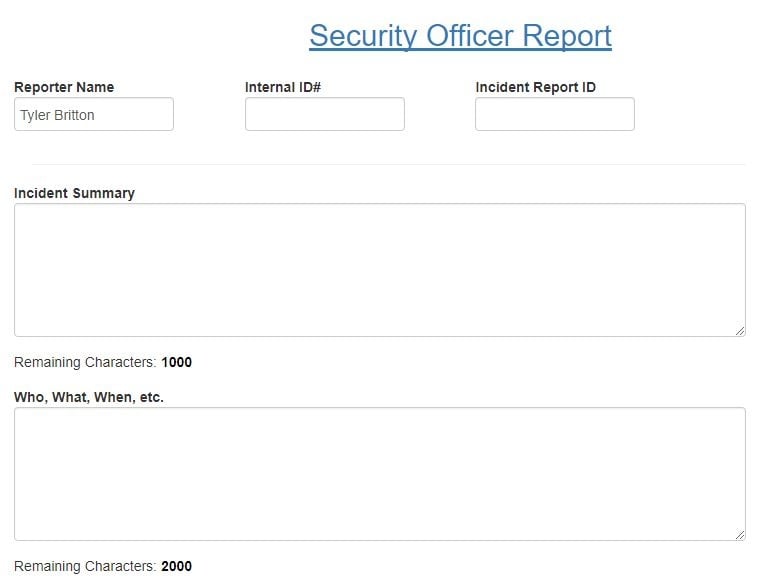
Like maintenance, security is a concern for all aviation service providers. Any type of operation can be vulnerable to intrusion, and will inevitably face such concerns. Having a security report is especially important if you have a dedicated security team or officer.
The three most important pieces of information for gathering security reports are the 5 W’s:
- Who was affected;
- When did the security issue take place;
- Where did the security issue take place;
- What was the security vulnerability; and
- Why was this a security concern?
10– Passenger Incident Report
Passenger incident forms are another report that has wide-ranging applicability to most aviation service providers. Most service providers are providing a service to customers.
In such cases, having the ability to report custom-specific incidents allows your organization to establish customer safety performance through data mining.
For example, after research, an airport may discover that they have had 30 passenger accident reports due to slipping and falling in bathrooms in the past year. These kinds of accidents can be a serious liability for providers.
Last updated in December 2024.






